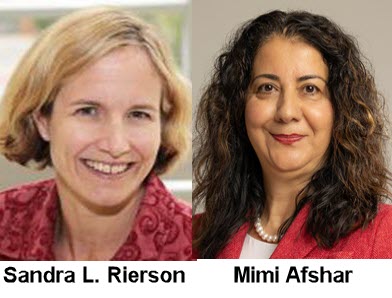Abstract
Excerpted From: Sandra L. Rierson and Mimi Afshar, Patent Reparations: HBCUs Paving the Road to Recovery from Racial Disparities in the United States Patent and Trademark Office, 68 Howard Law Journal 167 (Winter, 2025) (428 Footnotes) (Full Document)
 The American patent ecosystem, which is almost as old as the country itself, has fostered persistent racial disparities in wealth in the United States. Enslaved people did not own their own labor and could not register patents or prosper from their inventions, which were often stolen from them. After the Supreme Court's decision in Dred Scott v. Sandford, even free Black people were thwarted from obtaining patents for their inventions because they were not considered citizens of the United States. The Civil War and Reconstruction nullified Dred Scott, but this period was quickly followed by Jim Crow and the legal doctrine of “separate but [un]equal” across much of the United States, which further impeded Black people from accumulating wealth or political power. As a result, they remained hamstrung in their ability to exploit their inventions by obtaining patents. Even today, due to systemic racism in the United States -- the modern shadow of slavery and Jim Crow -- Black people are underrepresented in the United States Patent and Trademark Office (USPTO), both as inventors and members of the patent bar. Societal inequities and racial discrimination continue to prevent Black people from fully participating in the nation's innovation ecosystem.
The American patent ecosystem, which is almost as old as the country itself, has fostered persistent racial disparities in wealth in the United States. Enslaved people did not own their own labor and could not register patents or prosper from their inventions, which were often stolen from them. After the Supreme Court's decision in Dred Scott v. Sandford, even free Black people were thwarted from obtaining patents for their inventions because they were not considered citizens of the United States. The Civil War and Reconstruction nullified Dred Scott, but this period was quickly followed by Jim Crow and the legal doctrine of “separate but [un]equal” across much of the United States, which further impeded Black people from accumulating wealth or political power. As a result, they remained hamstrung in their ability to exploit their inventions by obtaining patents. Even today, due to systemic racism in the United States -- the modern shadow of slavery and Jim Crow -- Black people are underrepresented in the United States Patent and Trademark Office (USPTO), both as inventors and members of the patent bar. Societal inequities and racial discrimination continue to prevent Black people from fully participating in the nation's innovation ecosystem.
The USPTO must play a key role in recovering and restoring the rights of Black Americans to create and own intellectual property and profit from it. Reparations, an essential step in achieving restorative justice, are due. Repairing the damage done to Black people by past patterns of de jure and de facto legal discrimination requires a multi-pronged approach. The USPTO has taken steps in the road to recovery, significantly by establishing patent and trademark clinics at law schools throughout the country, especially at historically Black colleges and universities (HBCUs). This article demonstrates the need for restorative justice in the USPTO. It also examines the impact of the USPTO's current reparative efforts and makes recommendations for further progress.
[. . .]
Addressing racial disparities in the USPTO to foster a more inclusive innovative ecosystem requires a multifaceted approach. The aforementioned initiatives and ongoing efforts by the USPTO are just the beginning. More comprehensive initiatives and policy reforms are needed to address and repair the historical damage done to Black and other minority inventors by centuries of racial violence and oppression. It cannot be repaired overnight. While the USPTO is currently taking steps to further this cause, ongoing efforts and continued commitment are essential. These reforms mark the beginning of a significant and transformative journey toward equity and inclusion in the American innovation ecosystem. HBCUs are at the forefront of this effort. They have been and will continue to play a critical role in paving the road to recovery from racial disparities in the USPTO.
Sandra L. Rierson, Professor, Western State College of Law at Westcliff University.
Mimi Afshar, Senior Clinical Professor at North Carolina Central University School of Law.


